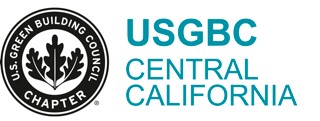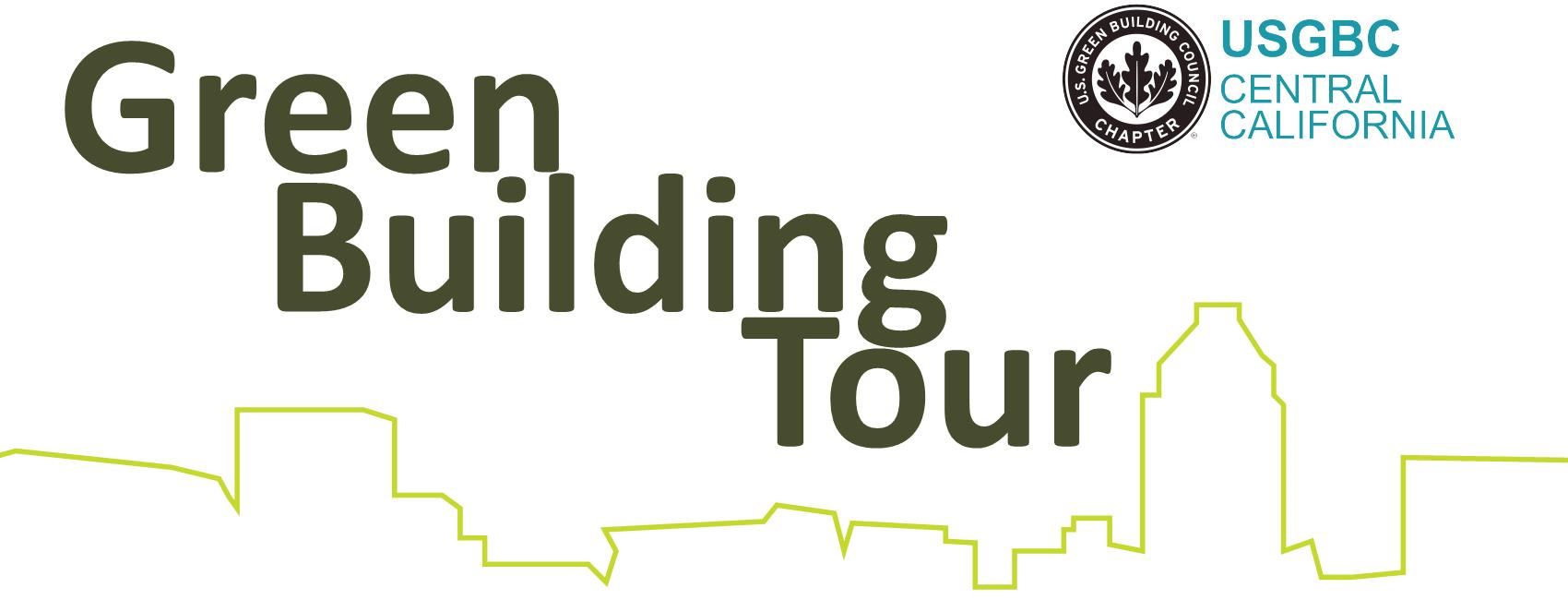|
|||||||||||||||||||||||||||
UPCOMING WORKSHOP: Carbon Free Home
|
|||||||||||||||||||||||||||||||
UPCOMING WORKSHOP: Make Every Drop Count
|
USGBC Central California's yearly efficient irrigation seminar is coming up on June 28th. Join us for this years' irrigation education opportunity with local and statewide experts. Speakers include David Fujino, UC Davis; Jim Bornemann, Ewing; Jon Bushoven, Fresno State; Julie Saare-Edmonds, DWR; and Maggie Reiter, Horticultural Advisor for Fresno, Madera, Tulare, Kings, UCCE.
|
|
Upcoming EVENT: Pathways to ZERO
Green Building Tour: Water Recycling Plant
|
|||||||||||||
Better Air, Indoors and Out
Clean air, whether it’s what you breathe inside or out,
keeps us healthy, active and happy. Your community can maintain and expand its
tree canopy, increase energy efficiency measures and program services, and
convert its fleet to ZEVs (zero-emission vehicles). You can also do similar
things inside your home and in your backyard. Here, we’ll discuss measures that
require you to utilize your green thumb. If you’re not especially gifted in
this area, don’t fret! I’ll outline some expert tips.
Inside Your Home
NASA released a Clean Air Study in 1989 that determined
which indoor plants best removed toxins, reducing “sick building syndrome”. The
list of these plants were originally researched to determine how best to keep
the air in space stations clean, but it is usefully in homes as well. NASA
recommends keeping one plant for every 100 square feet of living or office
space.
**Important for pet owners: make sure to note the
last column in this chart!**
| Plant, removes: | benzene[2] | formaldehyde[2][5] | trichloroethylene[2] | xyleneandtoluene[6] | ammonia[6] | Toxic to dogs, cats [8] |
|---|---|---|---|---|---|---|
| Chinese evergreen(Aglaonema modestum) | Yes[5][18] | Yes[5][18] | No | No | No | toxic [19] |
| Variegated snake plant, mother-in-law's tongue (Sansevieria trifasciata'Laurentii') | Yes[5] | Yes[2] | Yes[5] | Yes | No | toxic [22] |
| Aloe vera (Aloe vera) | Yes[32] | Yes[1] | No | No | No | toxic [33] |
| Janet Craig (Dracaena deremensis "Janet Craig") | Yes[1] | Yes[1] | Yes[1] | No | No | toxic [34] |
| Warneckei (Dracaena deremensis "Warneckei") | Yes[1] | Yes[1] | Yes[1] | No | No | toxic [34] |
| English ivy (Hedera helix) | Yes | Yes[5] | Yes | Yes | No | toxic [12] |
| Devil's ivy, Money plant (Epipremnum aureum) | Yes | Yes[2] | No | Yes | No | toxic [15] |
| Peace lily (Spathiphyllum'Mauna Loa') | Yes | Yes[5] | Yes | Yes | Yes | toxic [16] |
| Red-edged dracaena(Dracaena marginata) | Yes | Yes[2] | Yes | Yes | No | toxic [24] |
| Cornstalk dracaena (Dracaena fragrans 'Massangeana') | Yes | Yes[2] | Yes | No | No | toxic [24] |
| Barberton daisy (Gerbera jamesonii) | Yes | Yes[5] | Yes | No | No | non-toxic [27] |
| Florist's chrysanthemum(Chrysanthemum morifolium) | Yes | Yes[2][5] | Yes | Yes | Yes | toxic [28] |
| Dwarf date palm (Phoenix roebelenii) | No | Yes[5] | No | Yes | No | non-toxic [9] |
| Areca palm (Dypsis lutescens) | No | Yes[5] | No | Yes | No | non-toxic [10] |
| Boston fern (Nephrolepis exaltata 'Bostoniensis') | No | Yes[5] | No | Yes | No | non-toxic [11] |
| Kimberly queen fern(Nephrolepis obliterata) | No | Yes[5] | No | Yes | No | non-toxic[citation needed] |
| Lilyturf (Liriope spicata) | No | Yes | No | Yes | Yes | non-toxic [13] |
| Spider plant (Chlorophytum comosum) | No | Yes[2] | No | Yes | No | non-toxic [14] |
| Flamingo lily (Anthurium andraeanum) | No | Yes | No | Yes | Yes | toxic [17] |
| Bamboo palm (Chamaedorea seifrizii) | No | Yes[2][5] | No | Yes | No | non-toxic [20] |
| Broadleaf lady palm (Rhapis excelsa) | No | Yes | No | Yes | Yes | non-toxic [21] |
| Heartleaf philodendron(Philodendron cordatum) | No | Yes[2] | No | No | No | toxic [23] |
| Selloum philodendron (Philodendron bipinnatifidum) | No | Yes[2] | No | No | No | toxic[citation needed] |
| Elephant ear philodendron(Philodendron domesticum) | No | Yes[2] | No | No | No | toxic[citation needed] |
| Weeping fig (Ficus benjamina)[25] | No | Yes[5] | No | Yes | No | toxic [26] |
| Rubber plant (Ficus elastica) | No | Yes[5] | No | No | No | toxic [29] |
| Dendrobium orchids(Dendrobium spp.) | No | No | No | Yes | No | non-toxic[citation needed] |
| Dumb canes (Dieffenbachiaspp.) | No | No | No | Yes | No | toxic [30] |
| King of hearts (Homalomena wallisii) | No | No | No | Yes | No | toxic |
| Moth orchids (Phalaenopsisspp.) | No | No | No | Yes | No | non-toxic [31] |
| Banana (Musa Oriana) | No | Yes[1] | No | No | No | non-toxic [35] |
Chart from: https://en.wikipedia.org/wiki/NASA_Clean_Air_Study
Tips for keeping your houseplants alive:
- Sunlight, sunlight, sunlight. A south-facing window is best for houseplants because the plants will get the brightest and longest stream of natural light. If you don’t have a south-facing window, put your plants wherever they will get as much natural light as possible in your home or office.
- Water, but not too much. I water my plants every 3 days. This allows the water to seep all the way through the soil and soak it, but not keep it constantly drenched. If you water too much, your plant can become susceptible to root rot and you’ll likely lose your plant quickly. Make sure your plants are in pots with drainage holes at the bottom (like this or this); these types of pots will help get rid of excess liquid.
- Only fertilize if necessary. Your houseplants should not need fertilization unless they’ve been in the same pot for a long time. You can add a fertilizer spike if your plant is a little wilted, but if you’re really worried about it, take your plant to a local nursery. They will be your expert in this field!
- Recognize when there’s a problem.
- If you water too much, if your plant tilts a lot and/or if there’s a rotten smell coming from your plant, it could have root rot. Dry out the soil and, if necessary, cut off rotting parts of the roots before replanting.
- If your plant is leaning towards the sun a little, keep rotating it. Your plant wants as much natural light as it can get! So as long as the lean isn’t extreme, a rotation every few weeks is good.
- A plant with yellow leaves is another sign of overwatering.
- A plant losing its leaves usually means its not getting enough sunlight.
- Use filtered water on your plants as often as possible. Minerals can build up in the soil and cause a white dust to form on your plant. This won’t cause you to lose your plant, but filtered water will minimize this. If you do see buildup or dust on your plant, gently wipe it off with a damp rag; this will allow the leaves to breathe more easily and thrive.
 |
| See how plants can transform a space? Photo Source: HouseBeautiful |
In Your Yard
I’ve written about the importance of maintaining tree canopies before, but this drought seems to complicate the issue. Not to worry!
There are plenty of drought resistant plants and trees out there and there are
plenty of wonderful guides to help you do this!
 |
| Go to this great event! Photo Source: USGBC-CC |
In addition, the U.S. Green Building Council (USGBC) Central California (CC) chapter is hosting a Resilient Landscaping: TransformationStrategies and Tools workshop on October 27th in Sanger. It is open
to anyone who wants to “save water in style” and, since the workshop will be
hosted by the Belmont Nursery, you can pick up some plants for your home, office
or yard while you’re there! Plus if you're a USGBC member, you'll save $25! Register HERE.
I encourage you to take advantage of this opportunity and
spread the word to your community and community leaders! As more residents,
business leaders and public agencies invest some time in resilient landscaping,
the community will see more water and cost savings. Furthermore, since the plants
will get just the amount of water they need and not more (since there’s no more
to be had!) the landscape will thrive and help the community look and feel more
alive and healthy!
Now that you are equipped with all of this information and the chance to attend a great informational event, how many of you will add plants to your home and transform
your yard? What are you favorite indoor and drought-resistant outdoor plants?
USGBC Central California: Resilient Lanscaping
LEDs and Utility Rebates: Save the Environment AND Cash Money!
The U.S. Green Building Council (or USGBC to yougreen-building aficionados) of Central CA chapter held a seminar at the
Unitarian Universalist Church, the first LEED-certified building in Fresno. LED Lighting and PG&E Energy Efficiency
Rebates Overview informed attendees of LED lighting benefits and how to
work with PG&E to painlessly become more energy efficient daily. Who knew
it could be so easy?
George Burman, an electrical
engineer and LEED Administrator for the UU church, began with a discussion of the
science behind LED technology. I promise to refrain from getting too technical
for those of you who, like me, tried very hard to understand concepts and do
well in Physics, but just fail to completely absorb it. *insert ashamed face
here*
Save the Environment
Unlike incandescent bulbs that
produce light through heat generation, an LED has no filament. LEDs produce
light by applying lots of energy to a semiconductor, which is then stimulated
by the movement of electrons going from high to low energy levels. This process
creates photons, or LIGHT! Voilà! That wasn’t so confusing, was it? The only
process that took LED manufacturers some time to develop was “white” LED light.
The semiconductors are “doped” with an element, each determining a different monochromatic
color. They found that combining red, blue and green LEDs produces “white” light,
which explains the bluish or yellowish (red LED + green LED) tinges we see in most white LEDs.
 |
| Photo Source: Christmas Designers |
Now for the goods: LEDs have high
efficacy (lumens/watt), long life (up to 22 years), small size, and come in
millions of colors. They don’t emit infrared radiation and ̶ here’s
the huge plus ̶ they don’t emit UV radiation either! So, inks
and dyes in paintings, photographs, etc. fade at a much slower rate under LED
light AND bugs are not attracted to it!
Unfortunately, there are a few drawbacks
to incorporating LEDs into building design including the initial high cost. You
also want to consider the poor color rendering index (CRI) of LEDs before
replacing your existing lighting system. (The CRI determines how good colors in
a painting, your clothes, etc. look under a type of light.) However, I think we
can agree that the environmental pros of LED lighting outweigh the few cons, if
we find integrating them to be in our budget of course!
Save Cash Money
 |
| Not this Cash Money? Photo Source: Businessinsider.com |
The first step for permanent
energy reduction is to get an Energy
Assessment. They are available onsite, by phone or you could even set up a
DIY assessment on My Energy (who doesn’t like a good DIY project?). Next, improve the efficiency of how something
is used. For example, an office building’s AC system should be monitored. Not
only are we generally more productive at a comfortable 77 degrees (see this Cornell
study), but we shouldn’t waste energy turning a temporarily unused building
into an igloo every night. Another solution is to purchase and install energy
efficient products; you will receive rebates
for doing so! You can also get money back for purchasing and installing energy
efficient products through a customized
retrofit (money back is determined case-by-case).
For those in commercial building
construction and new building design, check out Savings By Design (SBD)
Resources. This program offers incentives for new construction that exceed the
latest version of Title 24. Note: DO NOT start construction before PG&E has
approved your application. You won’t see those incentives if PG&E hasn’t
approved you PRIOR to construction!
Finally, if you have a business,
PG&E has Demand
Response programs. These offer incentives for reducing a facility’s energy
use during times of peak demand (hot day, statewide emergency or power plant
failure). Turn things off that don’t NEED to be on during peak demand and
receive an incentive? That seems like an easy choice… I do it. So should you!
"Sping into LEED" showcasing LEED certified buildings in the Central Valley
USGBC-CC is hosting a local LEED project showcase and celebration of green building design. Keynote speaker Darius Assemi and other leaders from the green building industry will provide an overview over the benefits of green building design and LEED certification. Local LEED certified projects will be highlighted and awarded. “The evolution of peoples’ mindsets about what green buildings actually entail is evidenced by the number of certified and registered LEED projects throughout our communities.”, said Michelle Musson, President USGBC Central California Chapter: “There are no limitations as to who can benefit from these sustainable buildings, as they affect our air, energy, water, work, and personal and play environments.”
When? Thursday, February 28th 2013 5:00pm-9:00pm
Where? The Tower at Riverpark
A Lance Kashian Building with pending LEED Certification
205 East River Park Circle, Fresno, CA 93720
When? Thursday, February 28th 2013 5:00pm-9:00pm
Where? The Tower at Riverpark
A Lance Kashian Building with pending LEED Certification
205 East River Park Circle, Fresno, CA 93720
Sign up? www.usgbccc.org
Who? The U.S. Green Building Council (USGBC) is a 501c3 nonprofit organization committed to a prosperous and sustainable future through cost-efficient and energy-saving green buildings. The USGBC Central California Chapter (USGBC-CC) was formed in 2005 to cultivate a healthy and flourishing environment for a more sustainable Valley.
The USGBC’s mission is to transform the way buildings and communities are designed, built, and operated, enabling an environmentally and socially responsible, healthy, and prosperous environment that improves the quality of life. USGBC-CC represents seven counties in the San Joaquin Valley and works towards its mission through its LEED green building certification program that encourages and enables green buildings and communities.
Contact: 800-788-9013 or info@usgbccc.org
Who? The U.S. Green Building Council (USGBC) is a 501c3 nonprofit organization committed to a prosperous and sustainable future through cost-efficient and energy-saving green buildings. The USGBC Central California Chapter (USGBC-CC) was formed in 2005 to cultivate a healthy and flourishing environment for a more sustainable Valley.
The USGBC’s mission is to transform the way buildings and communities are designed, built, and operated, enabling an environmentally and socially responsible, healthy, and prosperous environment that improves the quality of life. USGBC-CC represents seven counties in the San Joaquin Valley and works towards its mission through its LEED green building certification program that encourages and enables green buildings and communities.
Contact: 800-788-9013 or info@usgbccc.org





.jpg)






